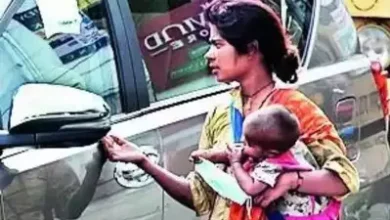Capital drainage is a significant concern before the general election
Delhi is facing a number of unaddressed difficulties as the Lok Sabha elections draw near, most notably the pressing need for an effective drainage system.

Delhi has poor drainage systems, which is a major problem when it comes to elections. People in the city point out that shortly after the new administration is constituted in June, a catastrophe will strike the city. When the monsoon rains fall, the city will unavoidably experience frequent floods and sanitary problems.
The metropolis is now the second most populated city in the world due to its explosive population growth, which saw it rise from 4 million in 1971 to almost 33 million today. Sewage infrastructure construction, however, has not kept up with this rapid expansion, which puts public health, sanitation, and river water quality in grave danger. Just 55% of those living in metropolitan Delhi have access to a centralized sewage system.
There are 201 natural drains in Delhi, which are separated into the three main drainage basins of the Najafgarh, Trans-Yamuna, and Barapullah. However, the city’s many areas have experienced recurrent floods as a result of increasing urbanization and major changes in land use. Numerous factors that impede the natural flow of water, such as widespread surface concretization, the disappearance of water bodies, encroachments on stormwater drains, and the discharge of untreated sewage and trash, exacerbate these issues.
The matter is made more difficult by the fact that several entities are involved in the drainage system’s administration. The situation is made worse by the fact that there hasn’t been a thorough drainage master plan since 1976. of 2011, the Congress party took the initiative to assign the IIT-Delhi the duty of creating a drainage master plan. However, the following change of government in 2018 caused the development to halt.
Speaking on the drainage system, Delhi Congress spokesman Jitender Kochar praised the party’s efforts during Sheila Dixit’s leadership but bemoaned the inaction that followed the change in leadership. After taking office, Kochar said that he intended to work with the party’s coalition partner, the AAP administration, to address these concerns. “We will bring up the issues with the AAP government, which is our alliance partner, and work on the betterment for the Delhiites,” he said after taking on alliance offices.
Chief Minister Arvind Kejriwal had to admit that the drainage infrastructure was not up to handling the unusually high rainfall after last year’s catastrophic floods. He had admitted that the infrastructure was not designed to withstand the flood, which caused waterlogging and overflowing sewers in several areas.
He emphasized that significant renovations are required to reduce the danger of flooding in the future. “Delhi was able to handle 100-125 mm rainfall in the past few years,” Kejriwal said during the previous monsoon. On July 8 and 9, however, Delhi had 153 mm of rain. People are having problems since this is the highest in forty years.
The terrible condition is confirmed by residents, who report ongoing drainage problems. Mukul, a merchant at Chawri Bazaar, expressed the general dissatisfaction among the people by criticizing the lack of action despite constant overflow throughout the year. “We file complaints, but nothing is done,” Mukul said, “because the drain in the road near the shops overflows year-round, not just during the monsoon season.”
Yogendra Chandolia, the BJP candidate for northwest Delhi, promised to give water drainage difficulties in his constituency top priority within the first 100 days of taking office in an effort to solve these urgent concerns. Chandolia identified Kirari as a symbol of the drainage system’s breakdown and promised to work with the Lieutenant Governor of Delhi to provide a detailed strategy in the first thirty days.
He said, “The area is the epitome of the failure of Delhi’s drainage system, especially in Kirari, a part of the northwest constituency where there are almost three lakh voters and ten lakh residents.” While the drains continue to be inundated, individuals must walk through the sewage water. Within the first 30 days of taking office, I will speak with the Delhi LG and come up with a strategy to address the drainage problem in the region.
A Uttam Nagar resident named Subhash repeated similar complaints, pointing out that the region is plagued by ongoing sewage overflow, which puts the health and welfare of the surrounding inhabitants at risk. “There is almost always an acute sewage overflowing issue in my area; it not only stinks but is unsafe for the nearby residents to be around,” Subhash said.
Delhi’s poor drainage system is a reoccurring issue, which emphasizes how urgent it is to take concrete action. Political candidates are under more pressure to solve these persistent problems and fulfill their pledges of comprehensive remedies because of the approaching elections. Resolving Delhi’s drainage dilemma is a critical issue that requires coordinated efforts from authorities and policymakers as it navigates its many obstacles.







